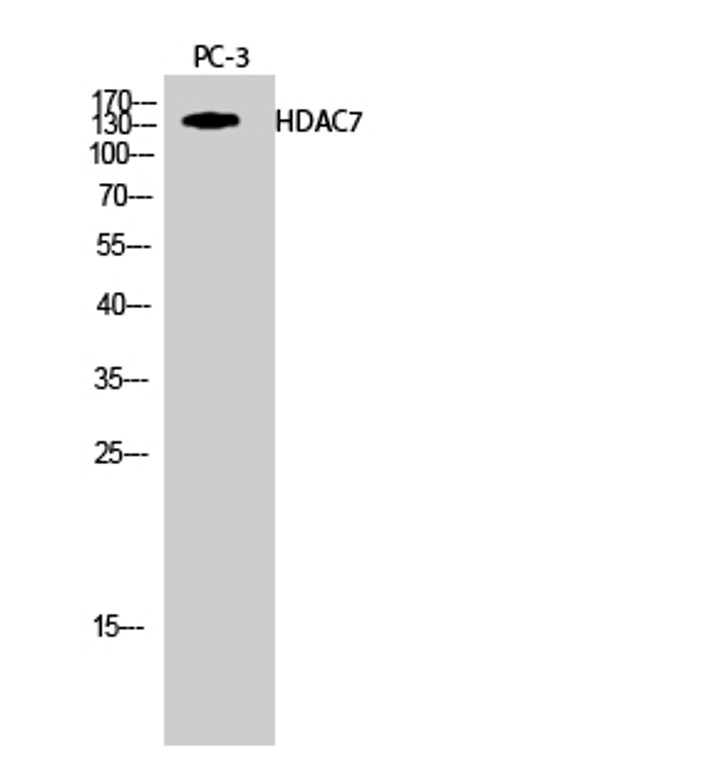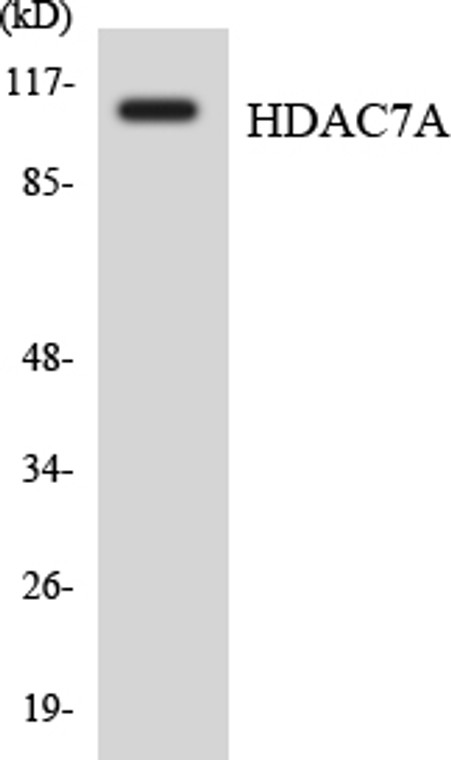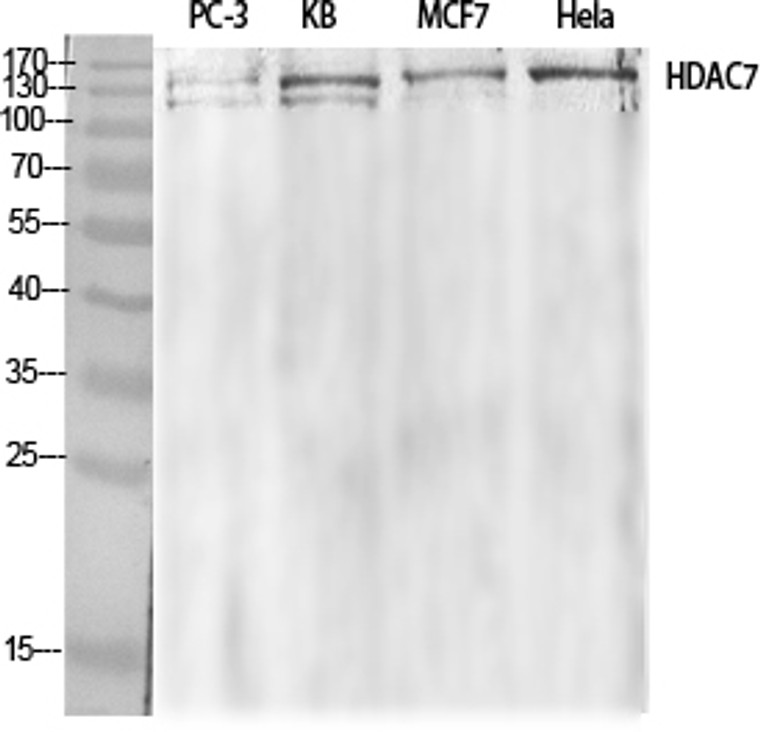| Host: |
Rabbit |
| Applications: |
WB/ELISA |
| Reactivity: |
Human/Mouse/Rat |
| Note: |
STRICTLY FOR FURTHER SCIENTIFIC RESEARCH USE ONLY (RUO). MUST NOT TO BE USED IN DIAGNOSTIC OR THERAPEUTIC APPLICATIONS. |
| Short Description: |
Rabbit polyclonal antibody anti-Histone deacetylase 7 (121-170 aa) is suitable for use in Western Blot and ELISA research applications. |
| Clonality: |
Polyclonal |
| Conjugation: |
Unconjugated |
| Isotype: |
IgG |
| Formulation: |
Liquid in PBS containing 50% Glycerol, 0.5% BSA and 0.02% Sodium Azide. |
| Purification: |
The antibody was affinity-purified from rabbit antiserum by affinity-chromatography using epitope-specific immunogen. |
| Concentration: |
1 mg/mL |
| Dilution Range: |
WB 1:500-1:2000ELISA 1:10000 |
| Storage Instruction: |
Store at-20°C for up to 1 year from the date of receipt, and avoid repeat freeze-thaw cycles. |
| Gene Symbol: |
HDAC7 |
| Gene ID: |
51564 |
| Uniprot ID: |
HDAC7_HUMAN |
| Immunogen Region: |
121-170 aa |
| Specificity: |
HDAC7 Polyclonal Antibody detects endogenous levels of HDAC7 protein. |
| Immunogen: |
The antiserum was produced against synthesized peptide derived from the human HDAC7A at the amino acid range 121-170 |
| Function | Responsible for the deacetylation of lysine residues on the N-terminal part of the core histones (H2A, H2B, H3 and H4). Histone deacetylation gives a tag for epigenetic repression and plays an important role in transcriptional regulation, cell cycle progression and developmental events. Histone deacetylases act via the formation of large multiprotein complexes. Involved in muscle maturation by repressing transcription of myocyte enhancer factors such as MEF2A, MEF2B and MEF2C. During muscle differentiation, it shuttles into the cytoplasm, allowing the expression of myocyte enhancer factors. May be involved in Epstein-Barr virus (EBV) latency, possibly by repressing the viral BZLF1 gene. Positively regulates the transcriptional repressor activity of FOXP3. Serves as a corepressor of RARA, causing its deacetylation and inhibition of RARE DNA element binding. In association with RARA, plays a role in the repression of microRNA-10a and thereby in the inflammatory response. Also acetylates non-histone proteins, such as ALKBH5. |
| Protein Name | Histone Deacetylase 7Hd7Histone Deacetylase 7aHd7aProtein Deacetylase Hdac7 |
| Database Links | Reactome: R-HSA-2122947Reactome: R-HSA-2644606Reactome: R-HSA-2894862Reactome: R-HSA-3108214Reactome: R-HSA-350054Reactome: R-HSA-8943724 |
| Cellular Localisation | NucleusCytoplasmIn The NucleusIt Associates With Distinct Subnuclear Dot-Like StructuresShuttles Between The Nucleus And The CytoplasmIn Muscle CellsIt Shuttles Into The Cytoplasm During Myocyte DifferentiationThe Export To Cytoplasm Depends On The Interaction With The 14-3-3 Protein Ywhae And Is Due To Its Phosphorylation |
| Alternative Antibody Names | Anti-Histone Deacetylase 7 antibodyAnti-Hd7 antibodyAnti-Histone Deacetylase 7a antibodyAnti-Hd7a antibodyAnti-Protein Deacetylase Hdac7 antibodyAnti-HDAC7 antibodyAnti-HDAC7A antibody |
Information sourced from Uniprot.org
12 months for antibodies. 6 months for ELISA Kits. Please see website T&Cs for further guidance









